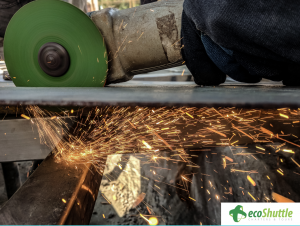
It’s not easy to make the transparent visible, particularly when it comes to infrastructure. It’s easy to take the mundane for granted except for when things go wrong: our cell phone networks; the modern electrical grid that has been around for more than 100 years; our water and sewage systems; and especially the buildings we spend most of our lives inside of.
The building you call home, or the one you call your office — the building you are sitting in at this very moment —has a huge impact on the environment. From heating and cooling, to lighting, insulation and more, every small home, medium warehouse and large high-rise office building is responsible for emitting carbon into the atmosphere. Referred to as operational carbon — or the carbon emissions associated with building operations — this well-known output has seen years of innovation across the built environment to mitigate some of its dire environmental impacts.
However, one other significant piece of the sustainable building puzzle, embodied carbon, is sorely overlooked. Embodied carbon is operational carbon’s often-overlooked counterpart; it is the footprint that results from the building and construction of a project, including the extraction, fabrication, transportation and erection of construction materials. While many tools exist to better manage energy associated with building operations, to date, there has not been an efficient method to measure and therefore manage the carbon emissions associated with building construction.
In fact, even in the environmental community, few know that the emissions from manufacturing building materials actually contribute more than 11 percent of global emissions (good luck wrapping your head around a record 37.1 gigatons of global CO2 emissions in 2018). Unfortunately, all embodied carbon processes are invisible to the future tenant and their true cost is not part of the development equation.”Out of sight, out of mind” no longer can justify a willfully ignorant approach to a significant source of CO2 and a knowable footprint of new construction.
As natural disasters become more destructive and “climate strikes” take hold around the globe, we no longer collectively can turn a blind eye to the climate crisis we’re racing towards. It’s time for governments, businesses and citizens (and especially the real estate and construction industry) to answer the calls of climate action that are being shouted from all corners of the world.
That’s why today, it’s increasingly important for corporations, investors and innovators to work together to create new solutions that can address embodied carbon and its inherent hidden challenges at scale.
Leadership is coming from global construction multinationals such as Skanska, which through a partnership with Microsoft, the Carbon Leadership Forum, Magnusson Klemencic, Charles Pankow Foundation and many other parties, is taking the lead on sustainable building through its Embodied Carbon in Construction Calculator tool, or the EC3 tool. The EC3 tool accesses an open-source database of environmental product declarations (EPDs) for thousands of building materials from suppliers across the industry and relies on sophisticated, research-based methodologies to support the analysis and representation of the carbon footprint of common building materials. As a result, for the first time, the EC3 tool enables anyone in the construction value-chain to more quickly and accurately measure the embodied carbon impacts of a project’s materials and empowers more “carbon smart” choices.
At the same time, we’re seeing a significant amount of investment and growing interest in proptech startups, including those building solutions to make construction more efficient, resilient and safer. Think Katerra, a technology-driven offsite construction company, or Versatile Natures, which is leveraging machine learning and AI to improve construction processes, or Toggle, a startup using robotics and automation to assemble rebar for prefabricated concrete — the world’s most ubiquitous building material. Using innovative technologies such as IoT, AI and robotics, these startups are taking age-old construction practices and turning them on their heads to better align with the needs and technology of the 21st century.Despite the continued growth of the construction industry — which creates $1.3 trillion worth of structures each year, according to the Associated General Contractors of America (AGC) — today’s construction industry predominantly relies on 20th-century tools, regulations and manual processes. This costs developers millions of dollars due to construction inefficiencies and design errors. It also ensures that construction remains one of the most dangerous jobs and environmental impacts are relegated to an afterthought. By integrating technology to revamp construction practices, Katerra, Versatile Natures and Toggle are, in their own way, working to change this reality and empower the construction industry to build more efficiently, safely and sustainably than ever before.
As more leaders across the built environment accept, adopt and scale innovations from the likes of emerging startups, we will be able to more forcefully and adequately address pollution due to the built environment, tackle the threat of embodied carbon and meet the climate crisis head on.

Very good info. Lucky me I recently found your website by chance
(stumbleupon). I have saved it for later!
Nice blog here! Also your site loads up fast!
What host are you using? Can I get your affiliate link to your host?
I wish my web site loaded up as quickly as yours lol